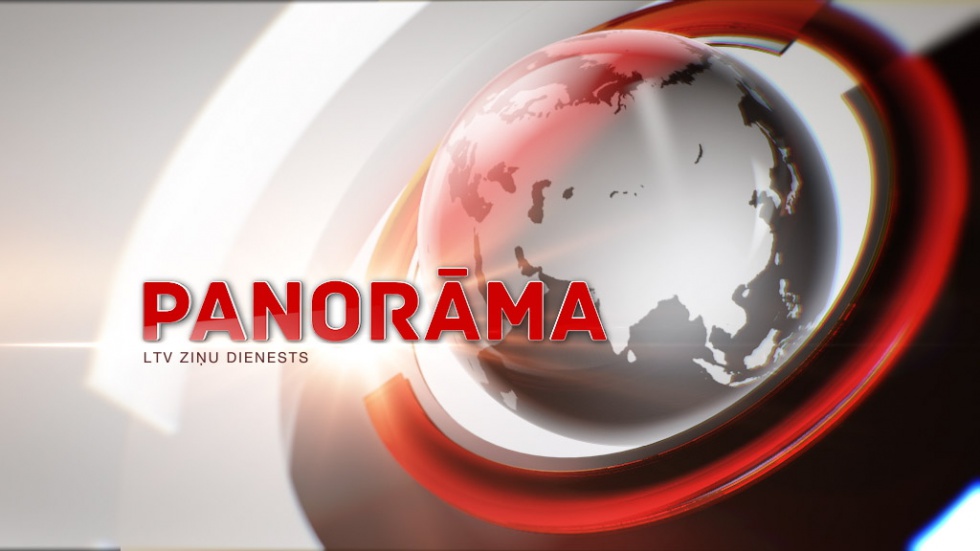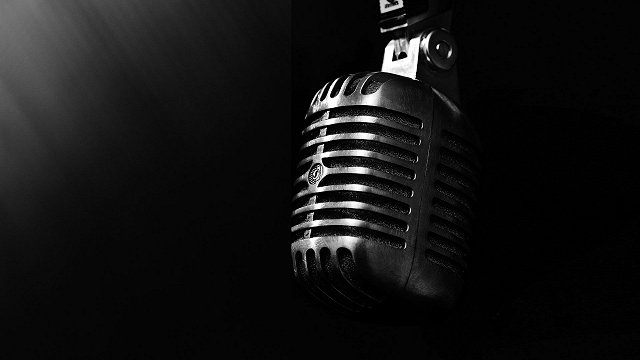The history of Panorāma can be differentiated into five eras.
The first news on Latvian Television
"The beginning of televised news in Latvia's television in 1958 is in itself a milestone. Because television started without news. [Broadcasting news] was evidently not considered to be a primary aim of television," said Tartu University researcher Jānis Juzefovičs.
Meanwhile Vita Zelče, a professor at the Faculty of Social Sciences of the University of Latvia, cast a look at the rather crude form of the very first broadcasts.
"News reports that are merely photos are hard to picture today, but... imagine a room with a small black-and-white TV in which one photo is superseded by another," she suggests.
The evening ritual under the Soviet occupation
However in time Panorāma, initially known as "The Latest News", became the main broadcast of LTV. "In becoming a regular show and the only long-form informative broadcast, Panorāma grew to shape the core of Latvian Television programming," said Zelče.
"Other shows were referred to as 'the broadcasts before Panorāma' and 'the broadcasts after Panorāma'. The show was a ritual of sorts both to television employees and to viewers who changed their schedule to participate in this ritual.. in one moment, more than a million people turn on their TVs, and the same happens in every single house," she said.
"Of course we can't deny that during the Soviet period Panorāma was a tightly controlled show. Journalists and news anchors had to adhere to very strict directions," said Zelče.
Nevertheless, the show had other roles, including those of teaching language and dictating fashion trends.
"I would like to stress the language aspect and that television did much to influence tastes and fashions. It was important for it to have good language, fashionable clothing, hairstyles and conduct, what we could call 'classic' behavior today. Sometimes, when I interview older people, I can see that many of their behavioral models come.. from this golden age of television, when the lay people shaped their sensibilities from what they saw on the TV screen," said Zelča.
The face of the national awakening
The show was very significant during the national awakening before the fall of the USSR. "Of course that this important time of the barricades, and these special episodes showing OMON [special police] attacks sparked a special sense of belonging into the supporters of the Singing Revolution. I think many people sympathized with news anchor Velta Puriņa and everything that was happening with the television," said Zelča.
Zelča is referring to the Soviet coup d'etat attempt in August 1991 when Velta Puriņa was the Panorāma news anchor who cut the broadcast short after reporting that OMON special police were storming the television building.
At that time, Latvian Radio was able to continue broadcasts from a secret transmitter in Valmiera, outside the capital.
Meanwhile Jānis Juzevofičs offers critical insight into how these broadcasts could be viewed.
"You can't really speak about real journalism back at that time, judging by today's standards. But it applies not only to Panorāma but also to radio and other media. Nevertheless, it was a different time back then, and maybe the media simply had to play a role like that. And maybe it would not be right to speak of it critically right now," he said.
"Looking at the standpoint of media studies, it's considered that the means used by journalists at the time of the Singing Revolution were the same utilized during the Soviet period. Of course the ends were different but the means were the same. It's not a critical evaluation, however. It was simply what was expected, at that time, from journalists," said Juzefovičs.
Modern journalism arrives at Panorāma
"It was about 2003. Gundars Rēders was the head of Panorāma and carried out far-reaching reforms. I can tell from my experience, as at the time I was writing critique of television news. At one point I noticed I had stopped criticizing Panorāma.
"Then there's this. Einārs Repše was the Prime Minister, and he acted quite peculiarly, for example he stepped out of the car and slammed the door shut with one of his legs, or he went to the Cabinet of Ministers in a leather jacket, on a motorcycle. Of course it's a real godsend to the camera crew. You can't not film it. And I think at that time journalists realized that they can depict the powers that be in a different way," said Sergejs Kruks, a lecturer at the Riga Stradiņš University.
"Then there was another thing, at about that same time. It was one of the cameramen, I think Andrejs Verhoustinskis. He had acquired a degree in Moscow. He introduced a very different, a very juicy filming style. He always sought for an interesting angle," Kruks said.
Kruks also praised Aija Kinca's job as a television journalist at that time.
Challenges of the modern market
Meanwhile Juzefovičs stresses that starting the late 2000s the situation changed, causing Panorāma to lose some of its dominant power.
"In 2007 a team of journalists, spearheaded by Arta Ģiga, left the television or were fired. It was a big blow against Panorāma's professional capacities. It was a setback in terms of development," said Juzefovičs.
"And it was the time when, for the first time, a thing happened that would have seemed impossible in the 1990s. Panorāma lost its leader's position for the first time, and competition arose between LNT news, TV3 news and Panorāma.
"At times the competition is fierce or less so, but the fact is that Panorāma lost its position of absolute leadership, as the media environment was changing," he said.
Today, Panorāma remains at the helm of Latvia's news broadcasts. But it'd be too much to ask for a single news show to set the tone in a saturated media space.
Latvian Television is owned by the state joint-stock company “Latvia State Radio and Television Centre”. It also owns the Latvian Radio stations and, by extension, the LSM news portals in Latvian, Russian and English.




























